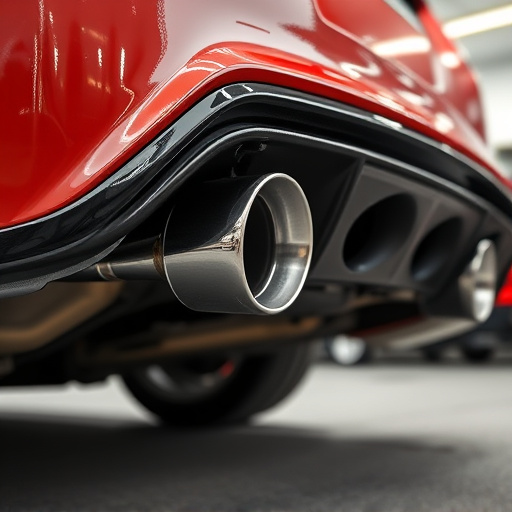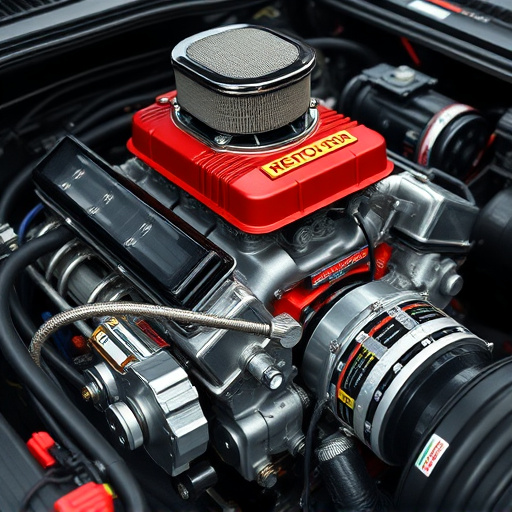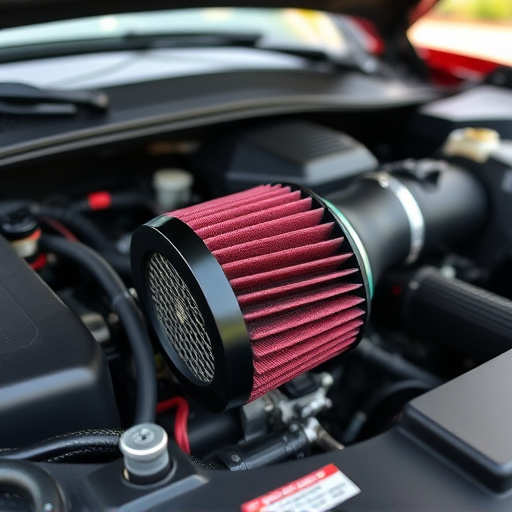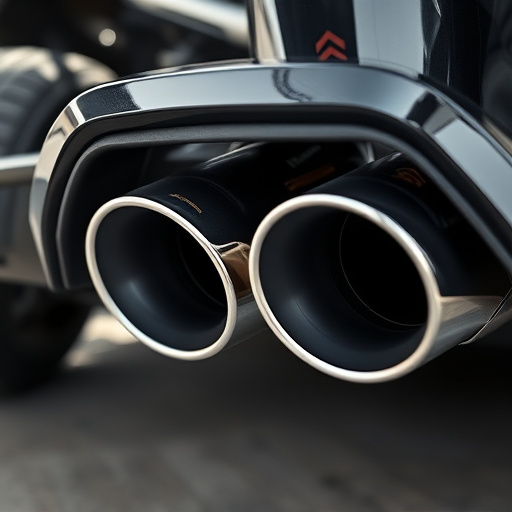The turbo wastegate is a pivotal component in turbocharged vehicles, managing boost pressure by controlling exhaust gas flow from the turbine to the muffler. This ensures optimal compressor wheel speed, enhancing performance across various driving conditions while maintaining engine health and fuel efficiency. A malfunctioning turbo wastegate can lead to significant issues like reduced power, acceleration, top speed, and fuel economy, along with increased noise levels and accelerated wear on related components.
The turbo wastegate, an integral component in turbocharged systems, plays a pivotal role in boost management. This innovative mechanism controls exhaust flow, enabling precise regulation of engine compression and, consequently, turbocharger performance. By understanding its function and the intricate dance it performs between boosting and venting, we uncover the secret to optimizing engine power. A malfunctioning wastegate, however, can lead to significant performance issues, emphasizing its crucial status in maintaining a turbocharged engine’s health and efficiency.
- Understanding the Turbo Wastegate: Its Role and Function
- How the Turbo Wastegate Manages Boost in Turbo Systems
- The Impact of a Malfunctioning Turbo Wastegate on Performance
Understanding the Turbo Wastegate: Its Role and Function

The turbo wastegate is a critical component in turbocharged vehicles, playing a pivotal role in managing boost pressure. It acts as a valve that controls the flow of exhaust gases from the turbine side of the turbocharger back into the exhaust system. By doing so, it regulates the amount of air and fuel mixture being compressed, ultimately determining the engine’s power output.
This mechanism is essential for maintaining optimal performance across various driving conditions. When you floor the accelerator, the wastegate opens fully to allow maximum flow of exhaust gases, boosting turbocharger speed and increasing engine power. Conversely, under lighter throttle conditions, it partially closes, reducing boost pressure to preserve fuel efficiency. This dynamic interaction between the turbo wastegate and the exhaust systems, enhanced by cat back exhaust configurations and air filter kits, ensures a balanced performance spectrum, from swift acceleration to efficient cruising.
How the Turbo Wastegate Manages Boost in Turbo Systems
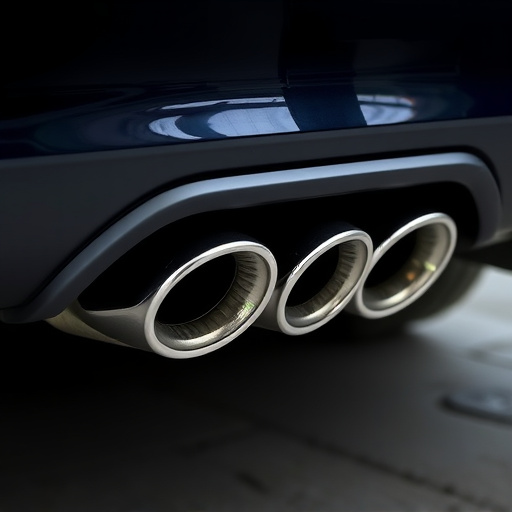
The turbo wastegate plays a pivotal role in managing boost levels in turbocharged vehicles. Its primary function is to control the flow of exhaust gases from the engine, thereby regulating the amount of air and fuel mixture being compressed by the turbocharger. By selectively routing a portion of the exhaust away from the turbine side of the turbo, the wastegate ensures that the compressor wheel spins at an optimal speed, maintaining efficient boost pressure. This precise regulation is crucial for achieving peak vehicle performance without compromising engine health.
Moreover, the wastegate’s operation is intricately linked to various components in a vehicle’s exhaust system, including the cat back exhaust. Efficient wastegate functionality enhances overall system responsiveness and power delivery, making it an integral part of tuning strategies aimed at improving driving dynamics and acceleration. In tandem with well-maintained brake components, a finely tuned turbo wastegate contributes significantly to both performance and safety considerations for turbocharged vehicles.
The Impact of a Malfunctioning Turbo Wastegate on Performance

A malfunctioning turbo wastegate can significantly impact a vehicle’s performance, especially in systems designed to enhance speed and power. The turbo wastegate is a critical component that controls the flow of exhaust gases from the turbine to the mufflers. When it fails, it can lead to several issues, affecting not just engine efficiency but also overall vehicle dynamics.
This disruption can cause the engine to produce less power, resulting in reduced acceleration and top-end speed. Moreover, an inefficient wastegate management system can negatively affect fuel economy due to excessive turbo spool time. The secondary effects are also noticeable, such as increased noise levels from compromised exhaust mufflers and potential wear on performance air filters and performance brakes, as the engine struggles to maintain optimal operating conditions.
The turbo wastegate plays a pivotal role in managing boost levels within turbo systems, ensuring optimal performance and efficiency. By controlling exhaust flow, it enhances engine power while minimizing stress on both the turbine and compressor. A malfunctioning wastegate can significantly impair performance, leading to reduced efficiency, increased emissions, and potential damage to the engine. Thus, regular maintenance and swift repairs are essential to keep your turbocharged vehicle running at its best. Understanding the crucial function of the turbo wastegate is a key step in maximizing the potential of any turbocharged engine.










